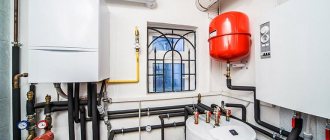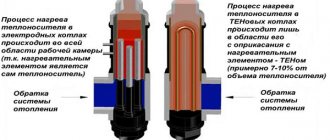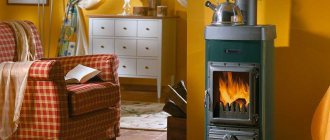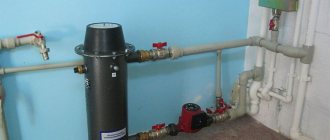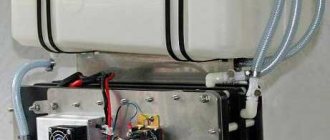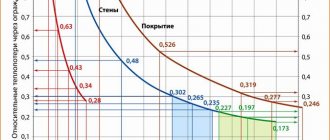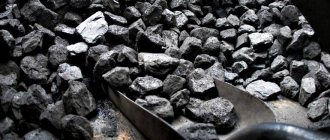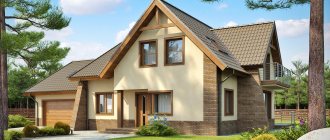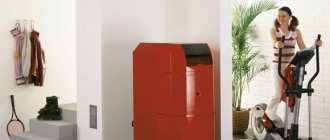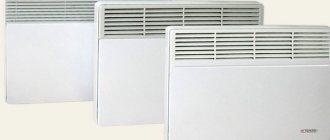Just a few years ago, the attitude towards pellet boilers was very cool. But now the situation has changed. This is due to an increase in prices for electricity and diesel fuel and at the same time with a decrease in prices for pellet heaters and an expansion of their range. Pellet heating has become more accessible and demand for it has increased significantly.
Let's figure out what this type of heating is, what are its features, advantages and disadvantages of use. Let's start with the term.
Heating with pellets
What is their advantage?
The peculiarity of pellets is that when they burn, more heat is released than from a number of other types of fuel. In particular, the combustion of 1 ton of these materials releases the same amount of energy as the complete combustion of 1.6 tons of wood, 480 cubic meters. meters of gas or 500l. diesel fuel
Thanks to this, heating with pellets can compete with other types of heating (especially heating with wood). And at the same time, their cost is not prone to such increases as, for example, the cost of gas or diesel fuel. All this leads to an increase in the number of private and public buildings using wood pellets for heating.
The cost of installing pellet heating
Price list for design and installation work (pdf, 504 Kb)
Order a heating calculation
In modern heating, the most profitable, safe and convenient solution is the use of wood pellets
, which have such advantages as affordable cost compared to electricity, natural gas, diesel fuel, as well as the absence of waste after combustion.
Picture 1.
Pellets
Types of devices for heating with pellets
Pellet fireplaces and boilers have been created for use with this type of fuel. Let's consider their varieties.
Pellet fireplaces
They are used to heat a single room or a small one-story house. The power of such devices ranges from 6 to 15 kW.
There are three types:
- Convection (heat only the air);
- With an additional water circuit for hot water supply (not only air is heated, but also water);
- Combined (with their help, not only pellet heating is produced, but also heating with wood or briquettes).
Pellet fireplace
Pellet boilers
They have power from 15 to 100 kW. They are located in the basement of the house, in a special room on the ground floor or in a separate structure (container or modular type).
Used for heating or hot water supply of the entire building. Modern models look quite compact (see photo).
Pellet boiler
The following types of these devices are distinguished:
- Boilers operating only on pellets;
- Heaters that have the ability to temporarily use firewood or briquettes as fuel in emergency cases (malfunction of the automation or burner). For this purpose, they have a special grill installed;
- Combined devices (they can burn not only pellets, but also firewood and briquettes).
Consumption and calculations of fuel pellets per 100 m²
It is worth considering that wood pellet material is a packaging product, packed in bags of a certain volume. Therefore, it is not difficult to calculate what the pellet consumption will be for 1 kW, 1 m². There is no need to interpret weight into volume, because pellet manufacturers always register goods in kg, and the unit of heat measurement is kW. High-quality fuel material has an exceptional ability to generate heat, so when burning 1 kg of wood pellets, about 5 kW of energy is generated.
Consequently, to obtain 1 kW of heat in a room, you will need to burn about 200 grams of pellets. It will not be difficult to determine the average consumption of granular fuel per 1 m², given that for every 1 m² you need 100 kW of thermal energy, subject to the permissible conditions of a ceiling height of 3 m. 100 W of thermal energy is obtained by burning 20 grams of fuel.
This calculation will be relevant if the efficiency of the pellet boiler system reaches 100%, which is not possible in reality.
The efficiency of heat generators is also indicated by higher rates, but will reach barely 85%. It turns out that when burning 1 kg of pellets in a fuel tank, no more than 4.25 kW will be released (5 × 0.85 = 4.25). You can also calculate the values the other way around. Another point is that heating 1 m² will require 100 W of heat if the ambient temperature is low enough and constant for 5 days. With average data, energy consumption for the entire heating season is almost 2 times less, which means the specific heat transfer per 1 m² is 50 W. The consumption of pellet fuel in a boiler installation for 1 hour is an incorrect calculation, and the final indicator is too small and inconvenient for calculations. It would be ideal to calculate the weight of fuel for 1 day.
Required power
In private houses, boilers with a power of 15 kW to 100 kW are installed. If less than 15 kW is required to heat the building, then it will be more profitable to install a pellet fireplace. The simplest way to determine the power that heating a private house with pellets will require is measured as 1 kW per 10 square meters of house area.
Advice! The above method is quite rough and approximate. It does not take into account heat loss from the house. Therefore, when calculating the required boiler power in this way, you need to add at least another 15%. Otherwise, the power of the equipment may not be enough.
Efficient heating of a private house with pellets
To understand how efficient it is to heat a private home with pellets, and why it is “effective,” you need to look at your home “from the outside.”
If you can put a “cross” next to the points below, then you should think about:
- House area from 250 - 300 square meters.
- Winter in the region where the house is built is characterized by low temperatures and strong winds.
- The house's thermal resistance indicators do not meet the standards established by SNiP. As an example, the Ural region walls R = 3.69.
Think about what?
- First of all, about insulating the house. By insulating building envelopes, you begin to save any fuel, be it pellets, main gas or diesel fuel. It doesn't matter whether you throw coal into your boiler or fire it with wood or electricity. Investments in insulation will pay off in any case, sooner or later.
- Secondly, it may be worth considering the possibility of heating not the entire volume of your home in winter. It is worth dividing the house into summer and winter parts, and you can save on winter heating of your home without significant additional costs.
- Thirdly, it is worth understanding that heating with pellets is not a cheap process. Pellets may be made from wood waste, but their cost in the Russian Federation is now as close as possible to European prices. We’ll talk about prices a little later, but for now, maybe it’s worth thinking about alternative heating options.
Why are we talking about area, insulation and climate? Because you can easily heat a small, very well insulated house in a climate with mild winters and moderate winds. It is clear that not everyone lives in the Krasnodar region and has the opportunity to lay 300 mm of basalt wool in the walls.
However, this is the harsh reality of life. If you have a large, poorly insulated house somewhere in the Sverdlovsk or Chelyabinsk region, heating your house with pellets will be “golden” for you.
And one moment. If you search for “pellets for sale” in Yandex or Google and see 5-10 manufacturers in your region, you have nothing to worry about.
If you understand that all pellet producers are located in other regions and you will have to buy fuel from resellers or transport it “far away,” then the same question arises again. Shouldn't we provide another heating system? Maybe install a coal boiler, or maybe bury a gas tank and burn it with LPG?
Advantages and disadvantages of pellet heating
Advantages
Heating your home with pellets has many advantages. They are as follows:
- boilers do not require special maintenance. Ash can be removed 1-2 times a month. A large number of modern models have an automatic cleaning function;
- high efficiency equal to 70-95%;
- many models have an additional hot water supply circuit;
- possibility of installation by yourself;
- explosion and fire safety;
- Convenient storage and transportation of fuel. The only requirement for the room where storage is carried out is dryness;
- absence of unpleasant odors during operation;
- heating a country house with pellets does not require approval for connection.
Quality of pellet granules
The characteristics of fuel pellets determine further heating, its feasibility and functionality. Pressed briquettes for this type of boiler require compliance with storage and movement conditions. When compared with the requirements for liquid and gaseous fuel materials, the situation with pellets is much simpler. It is only important to control the permissible level of humidity in the room.
The quality of pellets can be determined by burning a small number of pellets in the firebox, which will be the determining factor in purchasing a whole batch. The key point here should be quality assurance based on the combustion of experimental samples.
If it is not possible to check the granules in this way, then we offer you alternative methods:
- Visual inspection of granules. The surface of the pellets should be smooth and shiny, without obvious cracks or chips. These indicators confirm compliance with the technological process at the time of manufacturing and pressing, and natural wood was used as a binder.
- Perform a fragility test. High-quality fuel material should not crumble upon palpation, so it is best to use solid granules. Pellets with a violation of the manufacturing process will begin to crumble already at the moment of transfer by auger equipment to the furnace.
- Choose pellets packed in bags. Under such conditions of storage and transportation, fuel will not combine with dust, which negatively affects the operation of the entire heating system.
- You should buy fuel material according to the parameters, sizes and types specified in the passport of the boiler installation itself.
- Study the shade of the granules. Light-colored pellets indicate the use in production of wood materials without bark and unnecessary impurities; they are considered the most effective for heating. Dark-colored granules indicate that the manufacturer used bark and wood waste as raw materials, so their effectiveness will be significantly lower.
What you should pay attention to when choosing
The choice is influenced by cost, power, and features of a particular model.
A modern pellet boiler is a cast iron or steel structure, equipped with a hopper of a fairly large volume - up to 500 liters. The indicated dimensions of the pellet storage device are found only in samples with a power of more than 50 kW.
When choosing a suitable boiler model, its price is usually taken as the main guideline. Heating equipment of this class costs at least 200 thousand rubles. This indicator varies depending on characteristics such as power, functionality, as well as the features of a particular sample.
Taking into account the power declared by the manufacturers will help you choose the right piece of boiler equipment; it is reduced to a unit of room area, expressed in square meters. m. As it increases, the dimensions of the loading hopper, as well as the dimensions of the entire device, increase. When choosing a suitable product sample, due attention is paid to the quality of the metal from which it is made.
Homemade boilers are inferior in efficiency to factory-made installations, but they are superior to them in their low cost and operational reliability. This can be achieved by increasing the thickness of the metal structural elements.
It is important to remember the total weight of the unit so that the prepared base can support it.
Types of granules
There are two types of fuel pellets – household and industrial. Household granules have low ash content, which means they have high heat transfer. For the production of such fuel, deciduous wood is used. As a rule, household pellets are used for heating private houses, garages, and outbuildings.
If industrial fuel pellets are used, then their quantity required for space heating increases. To produce such solid fuel, low quality raw materials are used.
Pellet boilers
The main difference between this heating system is the use of a pellet boiler. Typically a boiler of this type consists of the following parts:
- housings with an automation unit and heating circuit and chimney outlets;
- special pellet burner;
- fireboxes with a heat exchanger and chimney (exhaust manifold);
- bunkers for storing pellets;
- mechanism for feeding pellets (granules) into the burner from the hopper.
Structurally, the fuel bunker is made separately, next to the boiler body. Sometimes it is larger than the boiler itself. In the case, the remaining parts are assembled into a single device.
Granules are poured into the hopper . Next, the pellets are delivered by a screw (or scraper) conveyor to the boiler body, where they fall on the pellet burner . Typically, the burner is a metal “deep” plate with rows of holes. The pellets are distributed evenly over it, and the electric ignition is activated. Typically, ignition is achieved using a small heating element and forced ventilation. The granules burn and are periodically replenished automatically using a screw. The heat and gases emanating from the burning pellets heat the heat exchanger. Water, heating up in the heat exchanger, begins to circulate through the heating circuit. The heat exchanger, like all boilers, is steel or cast iron.
Other types of fuel used to heat a home are wood and briquettes. Their comparison is presented at the following link:
What is pellet heating
Pellets are made by pressing under pressure from well-dried sawdust, straw, various plant husks, and sometimes even chicken droppings. Peat pellets are also produced. Most often, pellets are sold in bulk in packaging or containers.
From the author. Briquettes are produced in approximately the same way. The difference is that they are larger and can have different shapes. Briquettes can be either round or rectangular. Moreover, they can reach impressive sizes and weight. There are several types (standards) of briquettes. The most common briquettes are RUF. To burn briquettes, it is not necessary to have a special burner - they can be burned in ordinary solid fuel boilers.
Boilers operating in such heating systems have a specific design and are called pellet boilers. Since pellets are classified as solid fuels, boilers using them are accordingly classified as solid fuel . They are divided according to power and design into small (from 1 to 10−15 kW) pellet fireplaces, and more powerful (from 10 kW to 0.1−3 mW) pellet boilers. Fireplaces may not have a separate heating circuit. Despite the wide variation in power, the operating principle of all devices is the same.
Another option for making fuel from sawdust is fuel briquettes:
Advantages and disadvantages of systems
In most European countries, as well as in the United States of America, wood pellet heating systems have been used to heat private homes for many years.
This popularity is primarily explained by the harmlessness of this method of heating a house for its residents, while, for example, heating boilers using diesel fuel cannot boast of environmental safety.
Advantages of furnaces
One of the most significant advantages of pellet stoves-fireplaces is their autonomy - they are absolutely independent of external energy sources (electricity, gas). In addition, the cost of such equipment is several times lower than that of alternative options.
Since the process of heating premises is almost completely automated, a large supply of pellets can be loaded into the furnace hopper in advance so that the system heats the house for a long period of time without human intervention. In addition, during the manufacture of absolutely all metal elements of the system, they are coated with special compounds that protect the furnace from corrosion.
Features of the device and principle of operation
Fuel is supplied to the boiler automatically from the pellet hopper.
The typical design of a pellet boiler for heating a private home consists of the following main components:
- combustion module;
- convective zone;
- ash pit.
In addition, the system contains a special mechanism for feeding wood pellets into the combustion chamber, as well as a bunker designed for storing them. In most models, the procedure for adding fuel does not require human intervention and involves automatic delivery to the point of use.
The screw method for refueling pellets for boilers together with the ignition mechanism guarantees their rapid combustion. This allows us to classify pellet heating equipment as technologically advanced.
Temperature and combustion intensity are controlled by a sensor
The system includes a built-in fan that forces air into the combustion zone. Its presence significantly increases the efficiency of solid fuel utilization and also accelerates heat exchange processes. To reliably ignite the unit, it is necessary that the furnace first ignites well. After this, the unit enters operating mode, during which hot gases are formed and discharged through the chimney to the outside.
Another feature of the equipment is large losses in the waste product output channel (up to 95 percent). This is considered a disadvantage of the design used.
In the boiler itself, the intensity of the air flow is automatically regulated, taking into account the optimal parameters of its functioning. If necessary, it is possible to manually control the operation of the system from a remote control located a considerable distance from the firebox.
A distinctive feature of the pellet unit is the continuity of fuel supply until a certain point, until the maximum temperature in the system is reached. If it is interrupted, it is possible to resume the operating mode only after the temperature in the circuit drops to an acceptable value.
